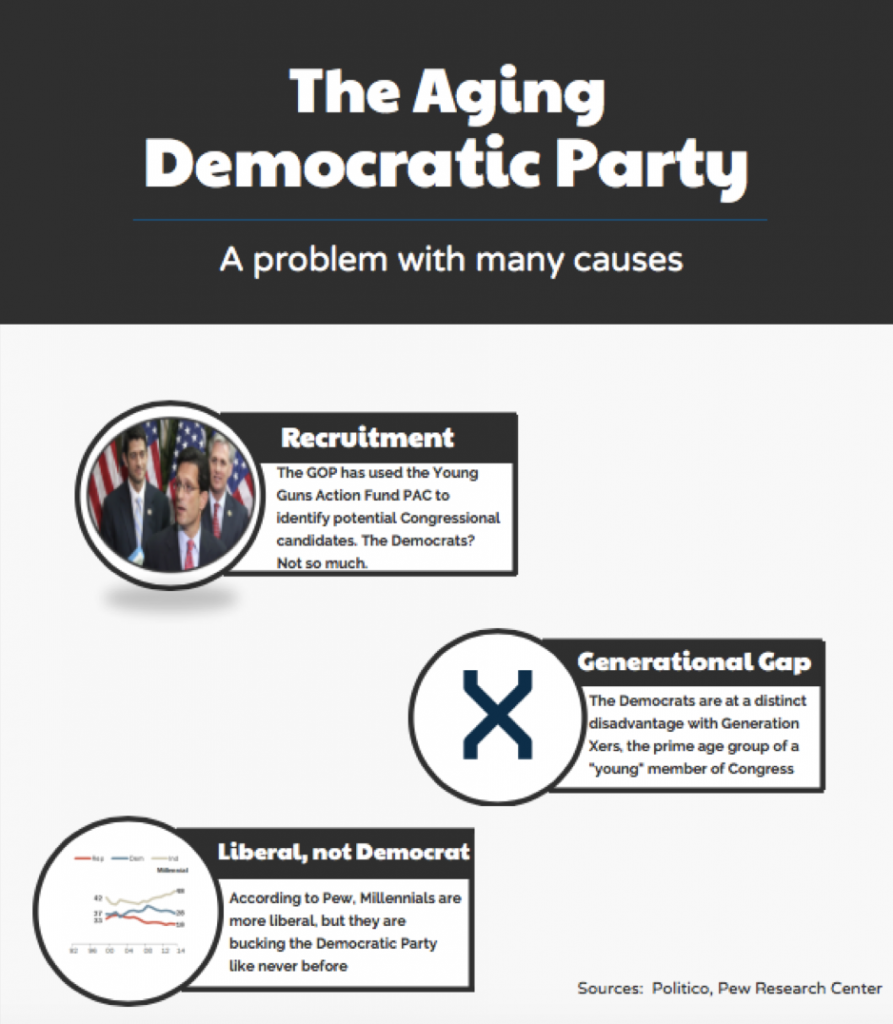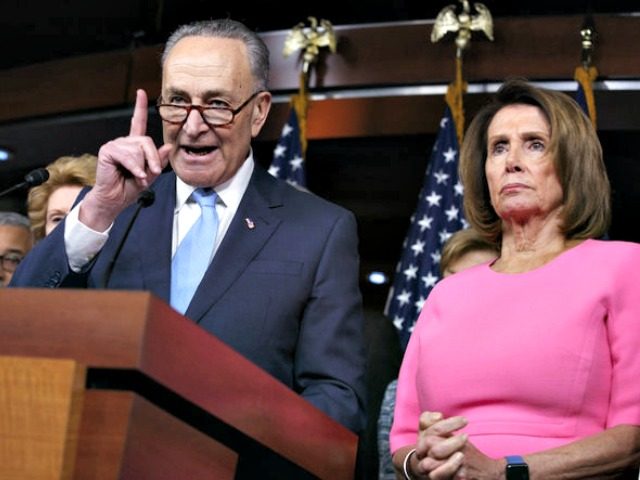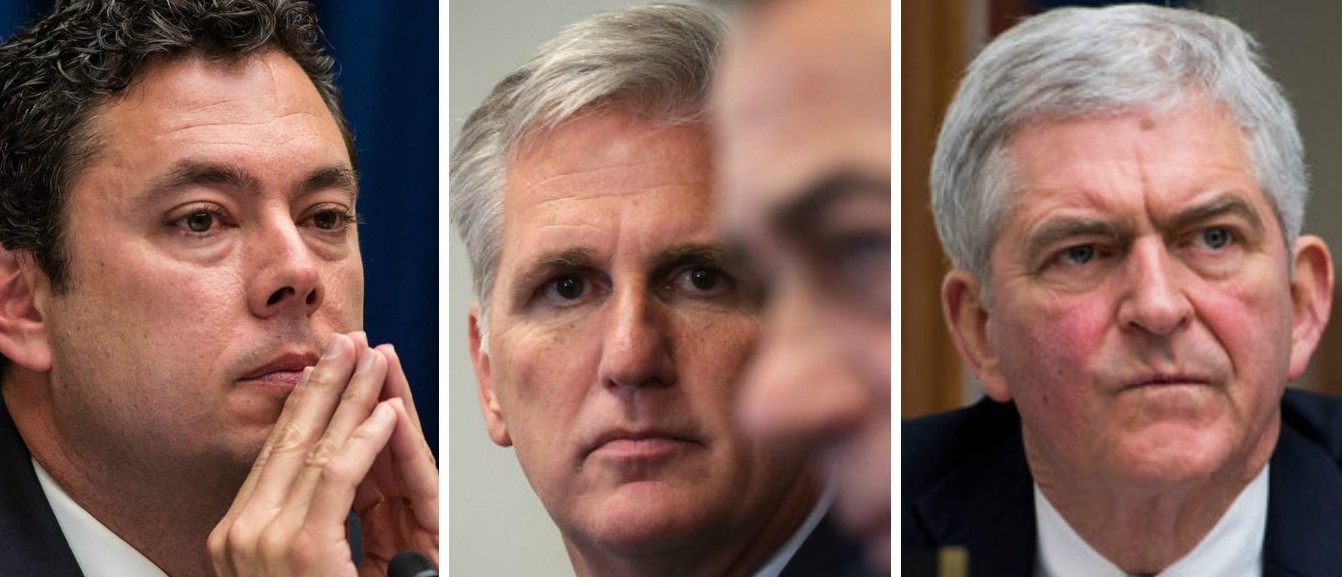If the past three presidential elections have been any indication, the Democratic Party is the party of the young. Barack Obama buried his opponents in the competition for the under-30 vote in both 2008 and 2012, and Hillary Clinton captured the vote of 55 percent of that same demographic in 2016. According to polling done by Pew, 57 percent of millennials report that they lean left.
If that’s the case, why is the Democratic Party so old?
A quick glance at the Congressional leadership of the party reveals a drastic age disadvantage. This inequity is most apparent in the House of Representatives, where the average age of Democratic leadership is 71, while Republican leadership averages a more youthful 49.
In the Senate, the difference amongst the leaders of the two parties is less dramatic, as both Republican and Democratic leaders are, on average, in their 60s. But some of the most visible Republican voices in the chamber, such as Marco Rubio and Ted Cruz, have yet to break 50. Contrast this with key Senate Democrats, such as 67-year-old Elizabeth Warren and 75-year-old Bernie Sanders, and the future becomes murkier for Senate Democrats.
Age is a significant factor in Congress, where the lack of term limits means incumbents have the ability to serve for decades. With reelection rates that are over 90 percent for House incumbents and in the high 80s for incumbents in the Senate, death and retirement are truly the most limiting factors for members of Congress. This means the Republican Party is poised to have lasting consistency amongst the top levels of its Congressional members for years to come, while the Democrats can expect to face significant shakeups.
Stability amongst members is essential for both parties, and each have factions currently at odds with one another. The election of Donald Trump, and the GOP majority houses that came with it, has served as more of an uneasy truce between establishment Republicans and conservatives than a true unification. Opposition to Trump may be the only thread of alliance between moderate establishment Democrats and those who wish to take the party further down the spectrum.
Interestingly enough, the Republican advantage with younger officials and leaders may be due to a generational gap. While it is often thought that the older the American, the more conservative he/she will be, polling by Gallup slightly disagrees. Democrats may fare better amongst Millennials and Baby Boomers, but the GOP has an advantage with Americans belonging to Generation X, middle-aged Americans born in the late 1960s through the 70s. The exact reason for this trend is unknown, but the reinvigoration of the conservative movement in the 1980s by Ronald Reagan is a likely contributor.

Another reason for this age gap in Congress is that Democrats do not have adequate party infrastructure for scouting and financing young political talent. Years ago, several young House Republicans, led by Paul Ryan, Kevin McCarthy, and Eric Cantor, created the Young Guns Action Fund, a PAC that subsidizes young conservative voices running in House elections. Although the organization has been dormant since Cantor’s embarrassing primary loss in 2014, the PAC’s overall efforts have proven successful. In 2010, 62 of the 90 candidates backed by the Young Guns PAC were elected to the House. Combined with the energy and unrest stemming from the rise of the Tea Party movement, the election of these candidates created a fixture of younger and increasingly conservative members of Capitol Hill.
In comparison, the Democratic Party has fallen short in similar efforts. The party does not have a national organization to identify potential budding Democratic office holders. Launch Progress, a PAC created to back what it calls “future progressive leaders,” does seek out candidates for local offices in states across the nation, but placing Millennials on the Durham City Council is not nearly as impactful as capturing Congressional seats.
Perhaps the best opportunity for Democrats to draft fresh-faced members is through the newly-launched Justice Democrats. The group was founded in the aftermath of the election of Donald Trump to locate and fund candidates to run for Congress in 2018. The catch is, to be backed by Justice Democrats, one must abide by their Bernie Sanders-esque platform: no corporate donations, Wall Street regulation, and universal healthcare and college. While this is a platform generally more in line with Millennial attitudes, it is on a direct collision course with the party establishment. But if the party wants to increase its number of youthful politicians, it will ultimately have to be willing to accept more progressive stances.
The Democratic Party is seeing an influx of energy after the election of Trump, similar to the activism the GOP saw in the late 2000s and early 2010s after Obama’s election. Democrats should realize the dire need to attract younger members of Congress who are poised to lead the party moving forward. More importantly, they should realize the opportunity in the discontent amongst the base. A focus on recruiting 30 and 40-year-olds to run for office now is the key if the Democrats want to be the party of tomorrow’s Congressional leaders.


